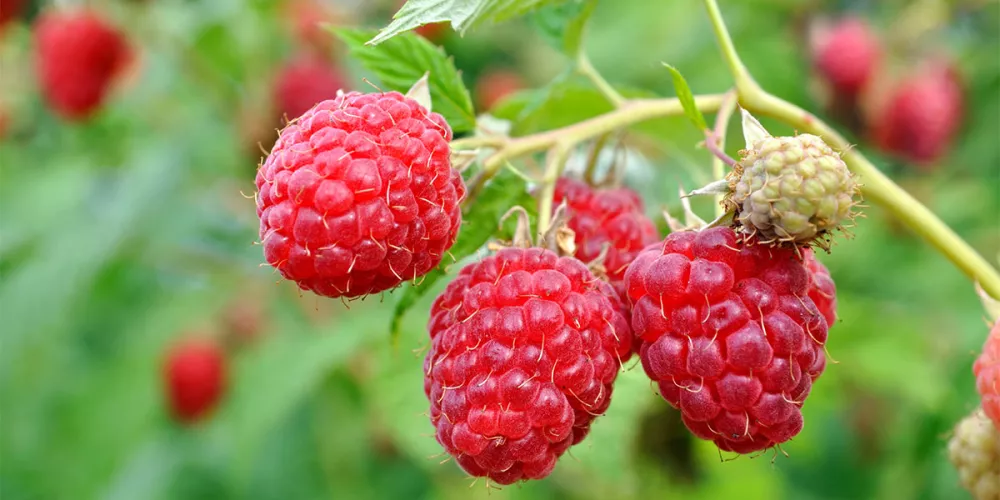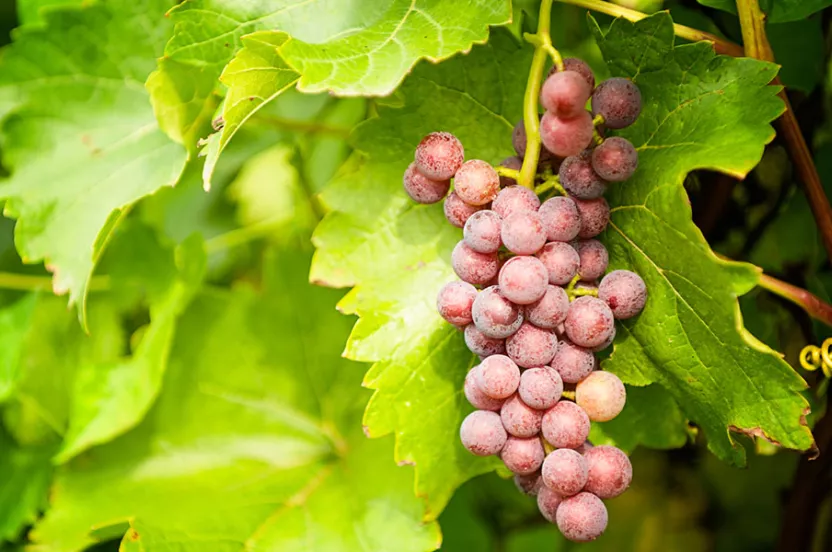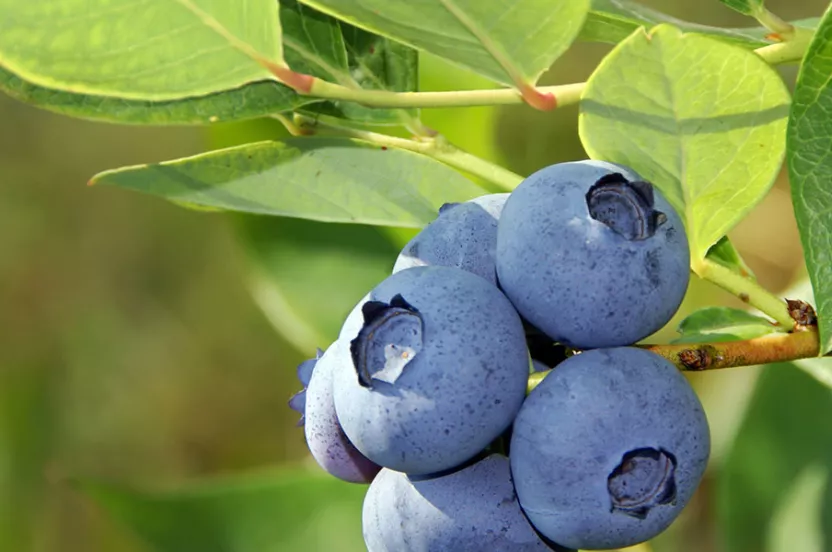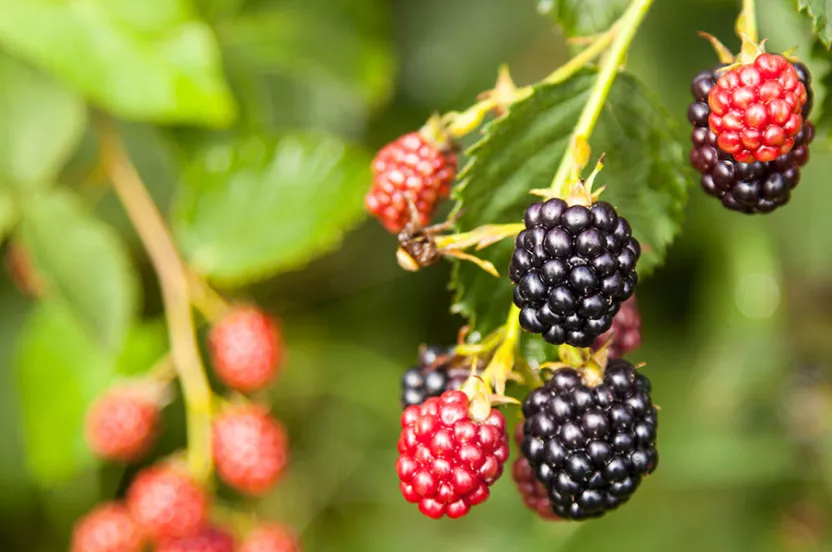Everbearing Red Raspberry Bush Planting & Care Instructions
Everbearing red raspberries are self-pollinating and have two crops, which make them a favorite for the home garden, as well as commercially.

Heritage Everbearing Raspberry is picked by gardeners for its flavor, firmness, and large fruit size.
This bush has two harvest seasons with a moderate yield in July and heavy yield in September until frost. Preferred uses include extra-sweet, juicy fruit that is good fresh, canned or frozen.
September Everbearing Raspberry is one of the most popular home and commercial cultivars. It produces crops in two seasons, with a light crop in June followed by a heavy crop in September. The berries are medium-size, tart, juicy, rose-red raspberries with small seeds. Preferred uses include fresh eating, frozen, and in preserves and pies.
How to Plant, Care, Prune and Harvest
Site Selection for Red Raspberries & Pre-Planting Instructions
- Light: Full Sun
- Soil: Wide Range.
- Pollination: Raspberries are self-pollinating.
- Trellis Creation: Everbearing raspberries tend to bend over from the weight of the fruit. They benefit from some type of support. Create a simple ‘T’ trellis at knee height with a top 1-1/2 feet wide to support the canes. This can be made using wood with twine or wire.
- Do Not Plant: In established garden areas where you have previously planted vegetables or fruit plants. Plant raspberries 300 feet away from other raspberries.
Raspberry Bush Planting Instructions
For best results, plant your raspberry bushes in early spring. Once your plants arrive, plant them immediately. If you cannot plant immediately keep new arrivals cool and roots moist. To keep cool, it is recommended that you store in refrigerator or cool place.
- Unpack and Soak: Unpack raspberry and soak in water for 3 to 6 hours just before planting.
- Cut Broken Roots.
- Dig Hole(s): The width of the hole should allow you to spread roots. If you are planting multiple raspberries, dig holes 2'-3' apart. If you are creating several rows, dig holes 6'-8' apart.
- Spread Roots in Hole
- Shovel Dirt Back in Hole and Add Amend Soil.
- Water: Give each plant 1"-2" of water. The plants are rather shallow rooted, so moisture needs to be at the surface. Do not let soil become dry to a depth of 6".
- Add Fertilizer: A weak liquid nitrogen fertilizer may be applied at planting. Keep fertilizer 3"-4" away from the base of the plant to avoid burning the roots.
- Mulch: Mulch the first year to keep the weeds down and increase the crop yield, but do not mulch after that unless the soil is very sandy.
Watering Raspberry Bushes
Water is important when young plants are being established. Water raspberries plants during the day. Give them about 1"-2" per week during growing season and up to 4" per week during harvest. The plants are rather shallow rooted, so moisture needs to be at the surface.
Fertilizing Raspberry Bushes
- First year fertilizing plan: After planting and the soil has settled, add actual nitrogen or a 10-10-10 nitrogen Remember to keep about 3"-4" away from the base of the plant to avoid burning the roots.
- Annual fertilizing after first year: Add actual nitrogen or a 10-10-10 nitrogen fertilizer, a higher amount added in the second year. When spreading the fertilizer, keep about 3"-4" away from the base of the plant to avoid burning the roots.
Pruning Raspberry Bushes
- First Year Pruning: To have 2 crops, first-year canes (primocanes) should be left unpruned. For only a fall crop, mow all the canes down to 2"-3" after the fall harvest during late fall or late winter.
- Annual Pruning: A well pruned raspberry patch will be healthier and more fruitful because of better distribution of light, air movement, and pesticides. Hand held clippers and thick gloves are necessary when pruning. Everbearing second-year canes should be removed after fruiting in the spring. Be careful not to injure the developing young first-year canes that will bear fruit in the fall. If you only want a larger fall crop and not a spring crop of berries, mow all the canes down to 2"-3' after the fall harvest during late fall or late winter. New canes will grow and produce fruit next fall.
- Dispose of all the canes to eliminate the spread of disease and insects. During growing season, remove any plants with misshapen leaves, berries that are too small and broken or rubbing canes.
How to Pick Raspberries
Harvesting in the morning after dew has dried will result in a longer shelf-life. When ripe, the berry will detach easily. Put in shallow containers to avoid crushing and move out of the sun. Avoid extra handling of the berries. Sunscald causes the berries to become bleached looking, but the fruit is still edible. Do not wash berries until ready to use them. The storage life of red raspberries when refrigerated is about 2–3 days.


